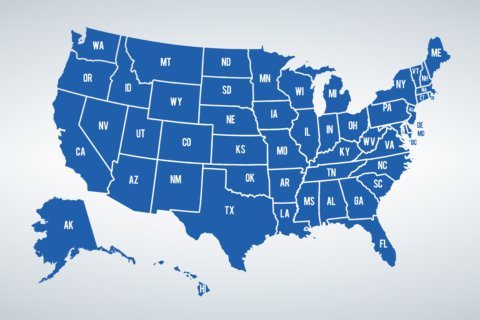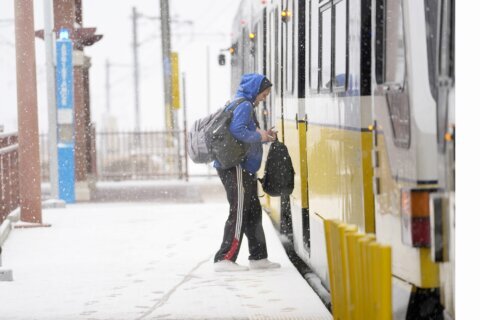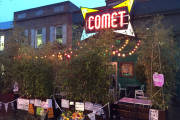LOS ANGELES (AP) — Los Angeles is the nation’s epicenter of homelessness, where more than 45,000 people live in weather-beaten tent encampments and rusting RVs. But even in the state that is home to Silicon Valley, technology has not kept up with the long-running crisis.
Billions of dollars have been spent to get homeless people off the streets in the region, but outdated computer systems with error-filled data are all too often unable to provide even basic information.
Better Angels United is developing a series of apps — to be donated to participating groups — that the nonprofit group hopes could revolutionize shelter and services for homeless people that includes a mobile-friendly prototype for outreach workers. It is to be followed by systems for shelter operators and a comprehensive shelter bed database the region now lacks.
Here are some of the key findings by The Associated Press:
What’s going on? No one really knows
More than 1 in 5 of all homeless people in the U.S. live in Los Angeles County, or about 75,000 people on any given night. The county is the most populous in the nation, home to 10 million people, roughly the population of Michigan.
Dozens of governments and service groups within the county use a mishmash of software to track homeless people and services that results in what might be called a tech traffic jam. Systems can’t communicate, information is outdated, data is often lost.
A homeless person wants a shelter, but is a bed available?
Again, it’s possible no one really knows. No system exists that provides a comprehensive listing of available shelter beds in Los Angeles County. Once a shelter bed is located, there is a 48-hour window for the spot to be claimed. But homeless case workers say that window sometimes closes before they are aware a bed is available.
“Just seeing … the general bed availability is challenging,” said Bevin Kuhn, acting deputy chief of analytics for the Los Angeles Homeless Services Authority, the agency that coordinates homeless housing and services in Los Angeles County.
Bad data in, bad data out
One of the big challenges: There is currently no uniform practice for caseworkers to collect and enter information into databases on the homeless people they interview. Some caseworkers might scribble notes on paper, others might tap a few lines into a cellphone, others might try to remember their interactions and recall them later.
All that information later goes into one or more databases. That leaves data vulnerable to errors, or long lag times before information recorded on the street gets entered.
Mark Goldin, Better Angels chief technology officer, described L.A.’s technology as “systems that don’t talk to one another, lack of accurate data, nobody on the same page about what’s real and isn’t real.”
In the home of Silicon Valley, how did tech fall behind?
There is no single reason, but challenges from the pandemic to the county’s sprawling government structure contributed.
With the rapidly expanding homeless numbers came “this explosion of funds, explosions of organizations and everyone was learning at the same time. And then on top of that … the pandemic hit,” Kuhn said. “Everyone across the globe was frozen.”
Another problem: Finding consensus among the disparate government agencies, advocacy groups and elected officials in the county.
“The size of Los Angeles makes it incredibly complex,” Kuhn added.
In search of a fix, building the app
Better Angels conducted over 200 interviews with caseworkers, data experts, managers and others involved in homeless programs as part of developing their software. They found startling gaps: For example, no one is measuring how effective the system is at getting people off the street and into housing and services.
One of the biggest challenges: Getting governments and service groups to participate, even though Better Angels will donate its software to those in L.A. county.
“Everything is safe, everything is secure, everything is uploaded, everything is available,” Goldin said.
But “it’s very difficult to get people to do things differently,” he added. “The more people that use it, the more useful it will be.”
Copyright © 2025 The Associated Press. All rights reserved. This material may not be published, broadcast, written or redistributed.







